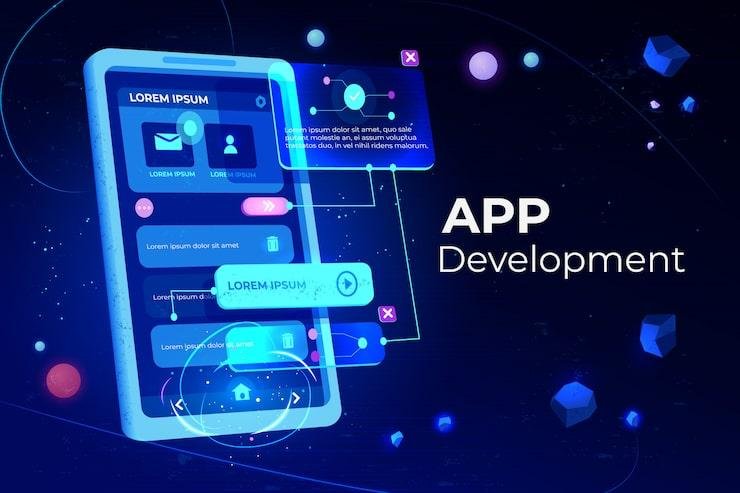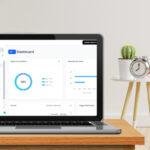Click here to buy secure, speedy, and reliable Web hosting, Cloud hosting, Agency hosting, VPS hosting, Website builder, Business email, Reach email marketing at 20% discount from our Gold Partner Hostinger You can also read 12 Top Reasons to Choose Hostinger’s Best Web Hosting
You’ve got a product idea, but the app build feels like a lottery: cost overruns, missed deadlines, or a feature-loaded MVP that attracts no users. That pain is urgent because every week of delay eats runway. The solution is process: a repeatable, low-waste path from problem → prototype → validated MVP. This guide explains what we can learn in app development for startups with Garage2Global — practical playbooks, prioritization templates, sprint schedules, security and QA checklists, investor demo scripts, sample budgets, and scaling triggers so founders can make better decisions, faster.
3 VPNs That Pass All Tests (2025)
- NordVPN: Zero leaks in tests, RAM-only servers, and Threat Protection to block malware.
- Surfshark: Unlimited devices, Camouflage Mode for bypassing VPN blocks, and CleanWeb ad-blocker.
- ExpressVPN: Trusted Server tech (data wiped on reboot) and consistent streaming access.
1. Validation Playbook — step-by-step (highly actionable)
A fast validation loop prevents wasted development.
Goal: Validate a core hypothesis in 2–4 weeks.
Decide the hypothesis. Example: “At least 5% of our target users will pay $5/month to remove a key friction.”
Recruit users (3–5 days): Use LinkedIn, Twitter, niche forums, or warm networks. Offer a small incentive ($20–50 gift card).
Problem interview script (10–15 mins):
“Tell me about the last time you tried to [solve X].”
“What did you try? What worked? What didn’t?”
“Would you pay for a solution that did Y? Why/why not?”
“If you were to use a product like this, what would make you cancel?”
Landing page + CTA (48–72 hours): A one-pager, three bullet points, pricing, and an email + “I want early access” CTA. Run a $50 ad test or share in communities.
Concierge run (1–2 weeks): Manually deliver the solution to 5 paying testers. Track time spent per user.
Decision gate: If >X% (decide your threshold) convert or commit, proceed to MVP; otherwise pivot or iterate on the value proposition.
Deliverables: Interview notes, landing conversion %, one concierge user story, time/cost per user.

2. MVP Scope Checklist (practical template)
Ship a single end-to-end capability that proves value.
Core user flow (signup → key action → value moment) complete and tested
Payment or commitment signal enabled (trial, paid, booking)
Analytics tracking for activation and retention (events instrumented)
Basic onboarding that gets users to the “aha” moment in <2 minutes
- One administrative dashboard or reporting view for early ops
Example of scope pruning: If social sharing is “nice-to-have,” remove it. Keep only the action that creates value.
3. Prioritization in practice (RICE example)
Use numbers, not opinions.
Feature A — Quick Signup
Reach = 1200 (est. monthly new users)
Impact = 4 (1–5 scale)
Confidence = 0.8 (80%)
Effort = 3 (story points)
RICE = (1200 * 4 * 0.8) / 3 = 1280.
Feature B — Advanced Search
Reach = 400
Impact = 3
Confidence = 0.6
Effort = 8
RICE = (400 * 3 * 0.6) / 8 = 90.
Decision: Quick Signup first (1280 > 90). Repeat monthly and recalibrate confidence.
4. Sample budget — realistic ranges (example)
Figures are ballpark estimates; adjust for region and complexity.
Discovery & prototype (1–2 weeks): $2,000–$8,000
Lean MVP build (6–10 weeks): $15,000–$60,000
Post-launch 3 months (support + infra): $3,000–$12,000
Monthly infrastructure (early stage): $50–$800
Contingency: 15–25% of build cost
How to avoid surprises: Ask for sprint-level estimates and hold vendors to milestone demos (clickable prototype → feature set → user-tested release).
5. Sprint Playbook (detailed, 8-week MVP example)
Sprint 0 (Week 0–1) — Discovery (10 business days)
Day 1–3: Stakeholder map, 3 user personas, user journeys
Day 4–7: Wireframes, clickable prototype (Figma)
Day 8–10: Acceptance criteria, backlog, technical spike for unknowns
Sprints 1–4 (2 weeks each)
Week A (Mon–Fri): Build core user flow, unit tests, demo build
Week B (Mon–Wed): Polish UI, QA exploratory, instrument analytics
Week B (Thu): Sprint demo to stakeholders, user panel test (5 users)
Week B (Fri): Sprint retro, backlog re-prioritization
Definition of Done (per sprint): Code merged, unit tests passed, E2E smoke test, analytics events logged, short demo video.
6. Fast user feedback loops — specific tools & cadence
Tools: In-app NPS, Amplitude/Mixpanel (events), Hotjar/FullStory (session replay), Typeform for structured feedback.
Cadence: Daily error/health check; weekly qualitative panel; sprint demo to 3 power users.
Triage rule: If a bug affects >5% of new signups, it becomes sprint high priority.
7. Onboarding that converts — micro-checklist
1st screen: Single goal and CTA (no signup friction).
2nd step: Immediate value (show example result or sample content).
3rd step: Minimal setup (2 fields max).
Follow-up: Email within 1 hour with next steps + 1 helpful tip.
A/B test idea: Compare single-screen signup vs. progressive (email only then profile) — measure activation in 48 hours.
8. Security & IP — actionable checklist
Encryption: TLS for transport; AES-256 for sensitive data at rest.
Auth: Use OAuth2 or passwordless; require MFA for admin accounts.
Secrets: Do not store secrets in repo; use vault/managed secret store.
Backups: Daily snapshot, monthly restore test.
Logs & monitoring: Centralized logs + alert on P0 errors and suspicious activity.
IP clause: Ensure explicit IP assignment in the contract; repos and CI admin access belong to the client upon final payment.
How to Solve Common Cybersecurity Problems with Malwarebytes Premium (and Free Alternatives)
9. QA & testing — practical steps
CI pipeline: Run lint, unit tests, and smoke tests on every merge.
Test coverage target: Aim 60–80% on core business logic; focus on integration tests for flows.
Manual exploratory: 2–3 sessions per sprint covering edge cases.
Beta rollout: 5–10% of users; monitor metrics for 72 hours before full release.
3 VPNs That Pass All Tests in 2025: Unbeatable Security, Speed & Privacy
10. Investor-ready demo & metrics — template + script
Demo script (90–150 seconds):
15s — The problem in one line + why it matters.
30s — Live demo showing the core flow that creates value.
30s — Proof: user quote, screenshot of heatmap or early revenue.
15–30s — Metrics & ask (what you want from investors).
Metrics dashboard (minimum):
Acquisition cost (per channel)
Activation rate (first-session conversion to “aha”)
Retention at D7 and D30
Revenue or commitment signals (trial → paid %)
Burn rate vs runway (clear)
Suggested early targets (industry dependent): Activation 20–40%; D7 retention 15–30% — use these as benchmarks, not absolutes.
11. Post-launch 3–6 month roadmap (detailed)
Month 0–1: Stabilize (hotfixes), instrument deeper analytics, recruit 50 pilot users.
Month 2–3: Ship top 3 validated features, refine onboarding, start paid acquisition test.
Month 4–6: Scale infra, implement monetization experiments (pricing page A/B), prepare enterprise/partnership outreach.
Business actions: Weekly KPI review; monthly investor update; quarterly customer advisory call.
12. When to scale infrastructure — concrete triggers
Performance trigger: 95th percentile API latency > 1s during normal traffic.
Error trigger: Error rate > 1% sustained for 30 minutes.
Growth trigger: Traffic growth > 3x baseline within 24–72 hours.
Business trigger: Paid conversions exceed projection and latency impacts checkout.
Immediate mitigation: Activate rate limits, degrade non-essential features, and add capacity via autoscaling groups.
Mini-case (hypothetical): Marketplace MVP that learned in 8 weeks
Hypothesis: Local service buyers will pay a booking fee to secure appointments.
Approach: Concierge bookings to 10 users, landing page for waitlist, 8-week MVP focused on signup, booking, and provider confirmation.
Result: 8 of 10 users paid a $5 booking fee; data showed average booking lead time 3 days — validated pricing and demand. MVP converted to a 6-month roadmap with payments and provider dashboard. (Hypothetical example to illustrate process.)
Key Takeaways (expanded)
Validate with interviews + concierge MVP to avoid building the wrong product.
Use a RICE-style, numbers-first prioritization to defend scope decisions.
Budget in three buckets and hold vendors to sprint milestones.
Ship one end-to-end flow, measure activation, and iterate every sprint.
Bake security, IP, and QA into contracts and sprint definitions.
Prepare a concise demo + a small metric set that tells a simple traction story to investors.
How to Install an SSL Certificate on Linux for Enhanced Website Security
FAQs (People Also Ask)
Q: How long should an MVP take with a partner like Garage2Global?
A: A lean MVP can range from 6–10 weeks for a single core flow; discovery and design add 1–2 weeks before that.
Q: Should I choose React Native or Flutter for a startup MVP?
A: Choose based on team expertise and long-term needs — both speed cross-platform delivery; pick the one your devs and ecosystem can support.
Q: How much should I budget for an early app build?
A: Budget varies by scope, but plan for discovery + 3 sprints + minimal post-launch support, plus a 15–25% contingency.
Q: What metrics matter most for investor demos?
A: Activation (initial value), retention (D7/D30), early revenue or commitment signals, and CAC if you’ve run acquisition tests.
Conclusion
If you want to move from concept to traction, use the playbooks above: run the validation script, set a lean MVP scope, use sprint-level milestones, and prepare a tight investor demo. If you’d like, I’ll convert the validation script into a fillable Google Doc, produce an 8-week sprint Gantt file, or make a printable one-page checklist to hand to your development partner. Tell me which one and I’ll generate it right away.
Now loading...






